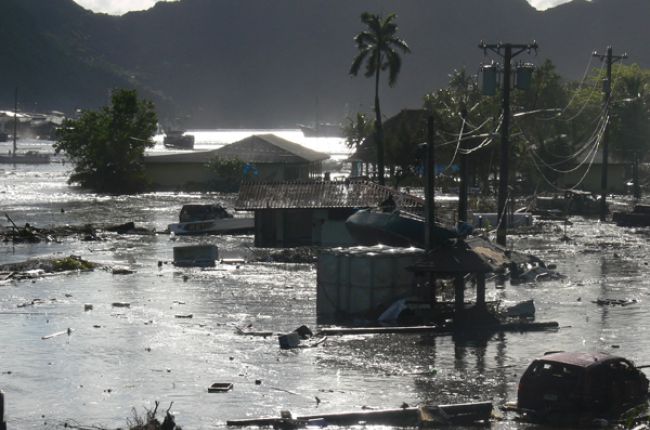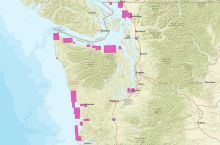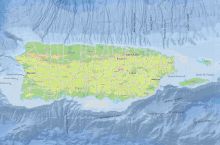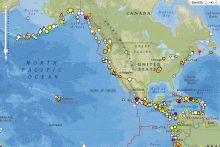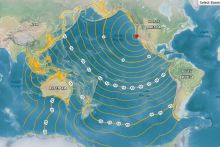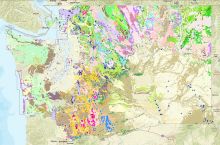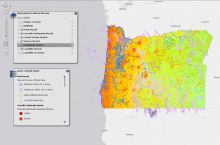A tsunami is a series of waves formed in a body of water by the sudden displacement of the entire water column. Most large tsunamis are caused by undersea earthquakes, though landslides, volcanic eruptions, explosions, and even meteorite impacts can also cause them. Tsunamis commonly appear on shore as a rapidly receding tide or rapidly rising flood. Tsunamis sometimes provide natural warning signs to people living on coasts, especially close to the tsunami-causing event, such as a rapidly receding tide prior to the waves' arrival. Global monitoring systems also provide critical early warning to coastal populations.[1]
Why do tsunamis matter?
Tsunamis can be highly destructive, causing extensive loss of life and property damage. They have killed more than 350 people on the coast of the United States since 1946, with losses exceeding half a billion dollars.[2] Even larger tsunamis, like the ones that devastated Chile in 1960, Indonesia in 2004, and Japan in 2011, have hit the U.S. Pacific coastal states in the past and could hit them again.
How can geoscience help inform decisions about tsunami hazards?
Tsunamis can’t be prevented, but scientists use earthquake information, tide gauges, and tsunami detection buoys to issue early warnings and give people time to evacuate. Others study records of prehistoric tsunamis left in the geologic record along coasts. These studies help determine the probability of tsunamis on different coastlines, leading to better hazard planning and preparedness. Some geoscientists study the shape and topography of coastal regions to determine the areas likely to be flooded during a tsunami of a given size, which helps to further refine hazard mitigation and evacuation plans.
References
1Pacific Tsunami Warning Center, https://www.tsunami.gov/?page=history#1
2NOAA/WDC Tsunami Event Database, www.ngdc.noaa.gov/nndc/struts/form?t=101650&s=70&d=7
Learn More
Introductory Resources
- About Tsunamis (Webpage), International Tsunami Education Center
In-depth discussion of tsunamis, their causes, and tsunami preparedness for a non-expert audience.
- National Tsunami Hazard Mitigation Program (Webpage), National Weather Service
Links to national, state, and international tsunami preparedness and response programs.
Resources for Educators
- Education Resources Network, AGI's Center for Geoscience & Society
Search for tsunami resources in: Organizations, Curricula & Instruction, Teaching Media, Outreach Programs
- NGSS Performance Expectations, Next Generation Science Standards
K-ESS3-2, 2-ESS2-3, 3-ESS3-1, 4-ESS3-2, 5-ESS2-2, MS-ESS3-2, HS-ESS2-5, HS-ESS3-1
- NGSS Disciplinary Core Ideas, Next Generation Science Standards
ESS2.C, ESS3.B

